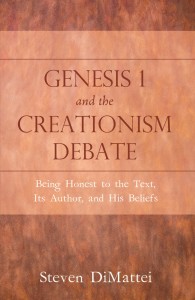Concerning its literary form, Deuteronomy presents itself as a set of orations or farewell speeches delivered by Moses on the plans of Moab shortly before he dies. That is to say, the Deuteronomist uses speeches as a literary device to disseminate, and even authorize, his message. Historiography in the ancient world largely entailed crafting speeches and placing them in the mouths of great personalities and ancestors of the past. This literary technique was used to lend authority to the particular ideology and aims of an author by placing that ideology on the lips of a heroic ancestor, even a deity. The speech form thus allowed the Deuteronomist to express his own ideology and beliefs by making Moses the mouthpiece for them. Indeed, the Deuteronomist presents Moses as authoring the very text he is writing. We will see that the Priestly writer does the same thing when he sets out to change the texts that are his sources, both of which are preserved in the Bible as we now have it. Again, this was typical practice in antiquity and can be seen in other ancient Near Eastern texts, Greek historiography, the writings of Josephus, and even Acts and the Gospels. The ancestral figure is used as an authoritative mouthpiece to promote the views and beliefs of a particular author or scribal school. In fact, this sort of literary technique does not stop with using Moses as a mouthpiece to express the particular theological positions and ideologies of our various biblical authors, but extends to the use of Yahweh as well. Many of the contradictions that I will begin posting for discussion were created when later writers or editors changed, altered, or outright contradicted something Moses or Yahweh said in an earlier literary source. By forces then unseen to these authors, a later generation of scribes sought to preserve both textual traditions when they compiled the texts that now make up the Torah, and left behind, as it were, the contradictions that are currently in the final form of what has come to be labeled “the Bible.” [read more here]
The speech form also allowed the Deuteronomist to subvert his earlier sources without raising an alarm. In their presentation, Moses’ introductory speeches (Deut 1-11) appear to re-narrate past events as if to bring the audience up to the current point in the narrative, the encampment on the plains of Moab. But these speeches do more than simply retell material found in the Deuteronomist’s older sources. The literary device of having Moses re-narrate the past allows the Deuteronomist to shape, alter, and even contradict his sources in an unperceivable manner. This allows the Deuteronomist to re-tell “history” or rather the historical narrative in drastically different manners so that Moses now becomes the mouthpiece for the Deuteronomist’s own views, beliefs, and ideology, while nonetheless presenting this modified re-telling as just that, a re-telling. Professor Bernard Levinson has dealt with this hermeneutical innovation extensively in his book, Deuteronomy and the Hermeneutics of Legal Innovation. Here’s an excerpt:
[For the Deuteronomist] retelling ‘history’ then becomes a process of setting forth a new, contemporary and innovative reading of the past for religious and/or political agendas contemporaneous with the author, but indeed this is presented and packaged as not authoring a new story but retelling the authoritative tradition. Thus innovation is clothed with the subversiveness of denying innovation, authorship, and originality.
In other words, the Deuteronomist interjects new and contradictory material into these traditional narratives but in presenting this new material as a re-telling of previous events from Moses’ own mouth, he presents his innovations under the guise of re-narrated tradition, and at the same time thereby authenticating and authorizing his very own changes and additions to the tradition.
We will look at some of these contradictions in the following posts. Basically these are incidents where the Deuteronomist’s Moses re-tells the events found in Exodus 19-24 and 32-34, and passages from Numbers differently: omitting narrative elements, adding new material, and contradicting others. The Deuteronomist’s sources were what scholars have come to identify as the Elohist and the Yahwist [see here].





